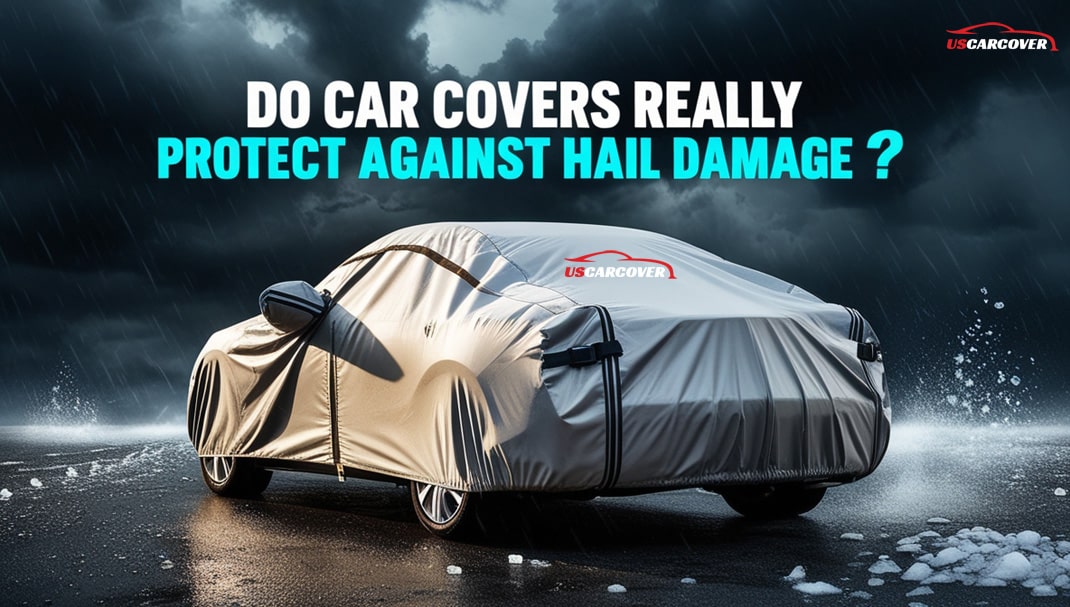
Wondering if car covers protect against hail damage? Learn about the effectiveness of hail-resistant car covers and how to safeguard your vehicle.
Hailstorms are an unpredictable menace for car owners, especially in regions prone to severe weather conditions. The damage caused by hail can be both immediate and costly, ranging from minor dings and scratches to shattered windshields and deep dents in the bodywork. For many, the idea of leaving their vehicle exposed to such conditions is enough to prompt the search for solutions like car covers. But the question remains: Do these covers actually provide meaningful protection against hail damage?
As someone who has spent years analyzing the automotive industry, I’ve witnessed first-hand the toll that nature can take on vehicles. The introduction of specialized hail-resistant car covers has certainly caught the attention of vehicle owners looking for a practical, affordable solution. However, not all car covers are created equal, and the real question is whether these covers can stand up to the force of hailstones, especially in the face of increasingly erratic weather patterns.
This article dives into whether car covers, particularly those designed for hail protection, are a worthwhile investment. Can they truly absorb the impact of hail and prevent damage, or are there limitations to what they can offer? By the end of this piece, you'll have a clearer understanding of whether a car cover can serve as a reliable defense against the fury of nature.
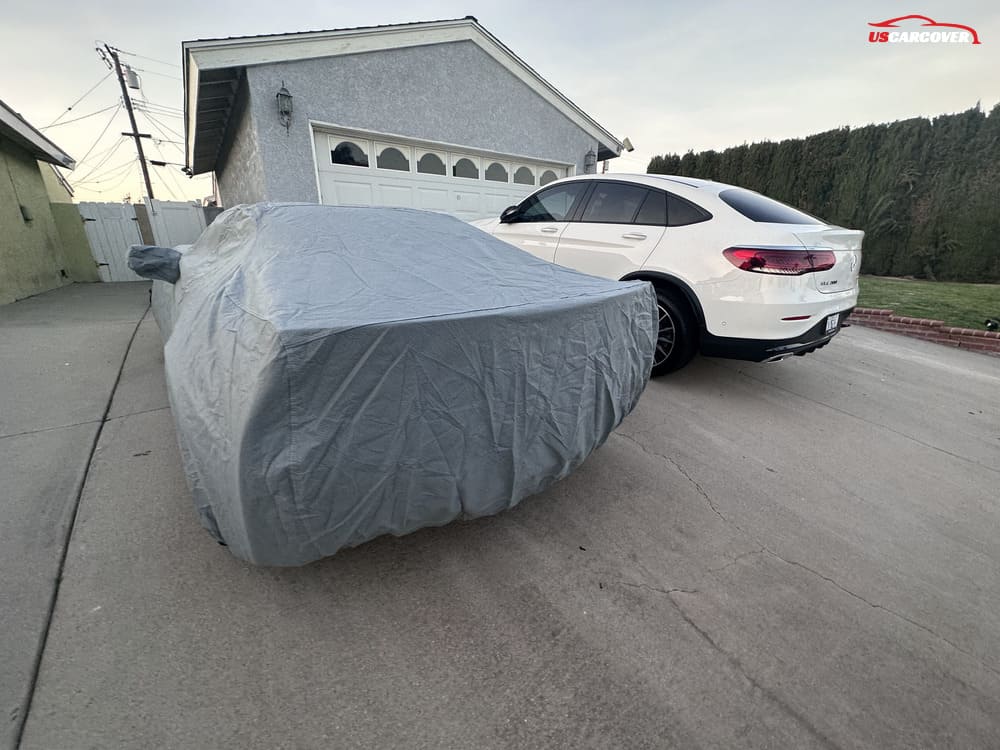
Understanding Hail Damage
To fully appreciate the potential of car covers in protecting against hail damage, it’s crucial to first understand how hail affects a vehicle. When a hailstorm hits, the size and velocity of the hailstones play a significant role in determining the extent of the damage. Hailstones can vary greatly, from small pellets that cause little more than cosmetic damage, to massive stones the size of baseballs, capable of inflicting severe dents, cracks, and even broken windows.
The most common areas of a vehicle that suffer from hail damage include the roof, hood, and trunk, where the flat, exposed surfaces bear the brunt of the impact. Windshields and side windows, while more durable, are also at risk, especially in more severe storms. The force of impact can leave vehicles with an unsightly, pockmarked exterior, and in worst-case scenarios, shattered glass or compromised structural integrity.
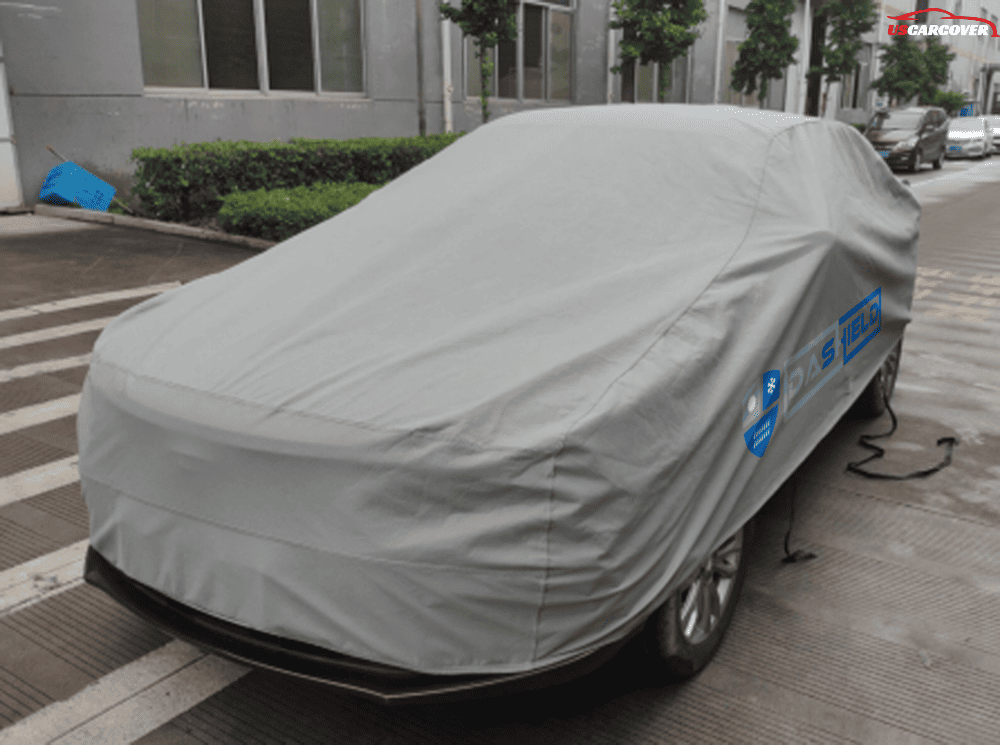
Repairing hail damage can be an expensive endeavor. Minor dents might be resolved with paintless dent repair, but larger damage often requires more invasive bodywork or even part replacement. On average, hail damage repair costs can range from a few hundred dollars to several thousand, depending on the extent of the damage and the parts affected. For vehicle owners, these repair bills add up quickly, making proactive protection all the more appealing.
Given the high costs of hail repair, the need for an effective solution is clear. But can a car cover—even one designed for hail protection—truly mitigate the severity of damage caused by falling ice? The mechanics of hail and its destructive potential lay the groundwork for evaluating the effectiveness of hail-resistant car covers in the sections to come.
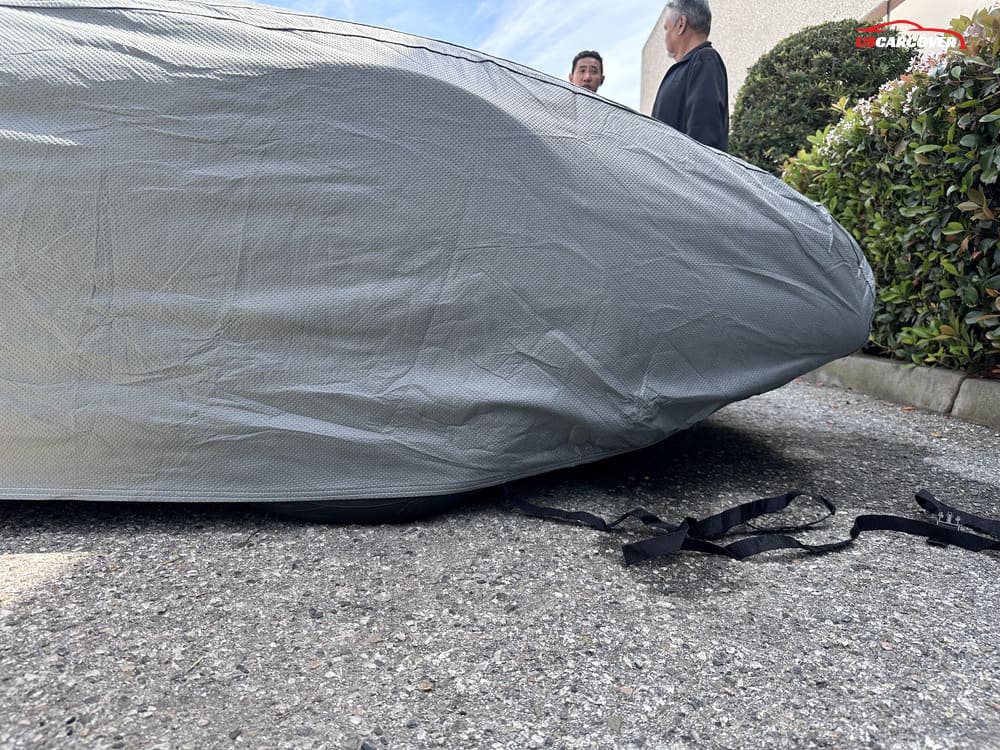
Related Articles: How to Choose the Right Car Cover for Your SUV
What Are Hail-Resistant Car Covers?
When it comes to shielding your vehicle from hail damage, not all car covers are built the same. Traditional car covers are primarily designed to protect against dust, UV rays, and light rain, but they often fall short when facing the aggressive impact of hailstones. This is where hail-resistant car covers come into play. These specialized covers are crafted with one goal in mind: to absorb the force of falling hail and minimize the risk of damage to your vehicle’s exterior.
So, what sets hail-resistant car covers apart? The key lies in their construction. Unlike standard car covers, which typically consist of thin, lightweight materials, hail-resistant covers feature multiple layers of padded protection. These layers usually include a dense outer shell made of heavy-duty fabric, often reinforced with foam or other impact-absorbing materials. The purpose of these layers is to distribute the force of hailstones across a broader surface area, reducing the likelihood of dents or cracks.
The most effective hail-resistant covers often incorporate an additional layer of thick, air-filled cells or padded inserts designed to absorb and dissipate the energy from hail impacts. Think of it as a cushion that stands between your vehicle and the destructive force of nature. In some cases, these covers are also water-resistant or UV-protected, offering multi-faceted protection beyond just hail.
However, it’s important to note that the effectiveness of these covers varies depending on the size and intensity of the hailstorm. While a well-made hail-resistant car cover can certainly fend off smaller hailstones, extreme conditions involving larger hail may still pose a challenge. This is where understanding the limitations and strengths of different cover designs becomes crucial.
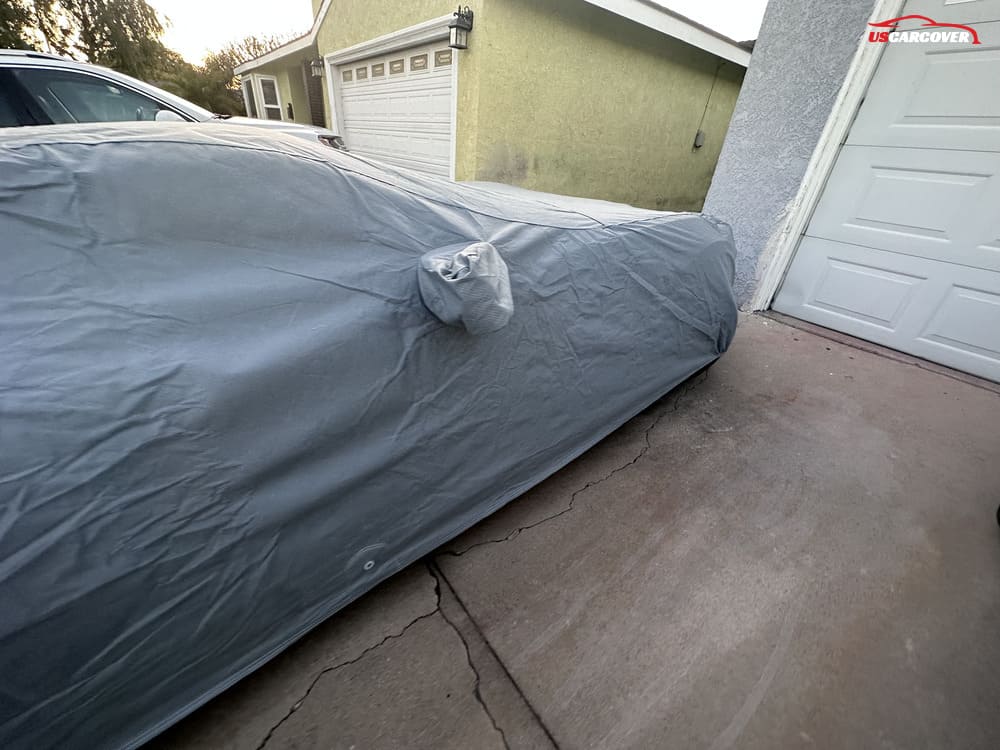
In summary, hail-resistant car covers are a far cry from their lightweight counterparts. Engineered for impact resistance, they offer a viable solution for protecting vehicles from hail, but as with any product, their success hinges on proper use and understanding the level of protection they truly offer.
How Effective Are Car Covers Against Hail?
Hail-resistant car covers can provide solid protection, but their effectiveness depends on the severity of the hailstorm. Standard covers, made from lightweight materials like polyester or vinyl, offer minimal protection against hail and are mostly ineffective against moderate hailstones. On the other hand, hail-resistant covers feature multi-layer designs and impact-absorbing materials, making them better at reducing damage, especially from small to medium-sized hail.
In general, these covers perform well in regions prone to moderate hail, preventing small dents and minimizing repair costs. However, they may not fully protect against large hailstones or extreme weather conditions. Strong winds and intense hailstorms can still cause damage, especially to vulnerable areas like windows and mirrors. Proper installation is crucial for maximum effectiveness.
Overall, hail-resistant car covers are a good investment for most situations, but they aren’t foolproof against severe hailstorms.
Related Articles: Custom-Fit vs. Universal Car Covers – What’s the Difference?
Alternatives to Car Covers for Hail Protection
While hail-resistant car covers provide a convenient and often cost-effective solution for protecting your vehicle, they are not the only option available. In fact, some vehicle owners may prefer alternative methods of protection, particularly in areas where hailstorms are frequent or particularly severe. Let’s explore a few of the most popular alternatives and how they compare to car covers in terms of effectiveness, cost, and practicality.
1. Carports and Garages
The most obvious and perhaps the most reliable protection against hail damage is parking your vehicle in a sheltered environment. Carports and garages offer a physical barrier that completely shields your car from the elements, including hail. A sturdy garage can withstand even the harshest weather conditions, making it the gold standard in hail protection.
However, the downside to this option is the cost. Constructing a garage or even a carport requires a significant financial investment, which may not be practical for all vehicle owners. Additionally, for those living in urban areas or places with limited space, building a garage may not be feasible. Still, if you already have access to a garage or carport, this is by far the most foolproof way to protect your vehicle from hail.
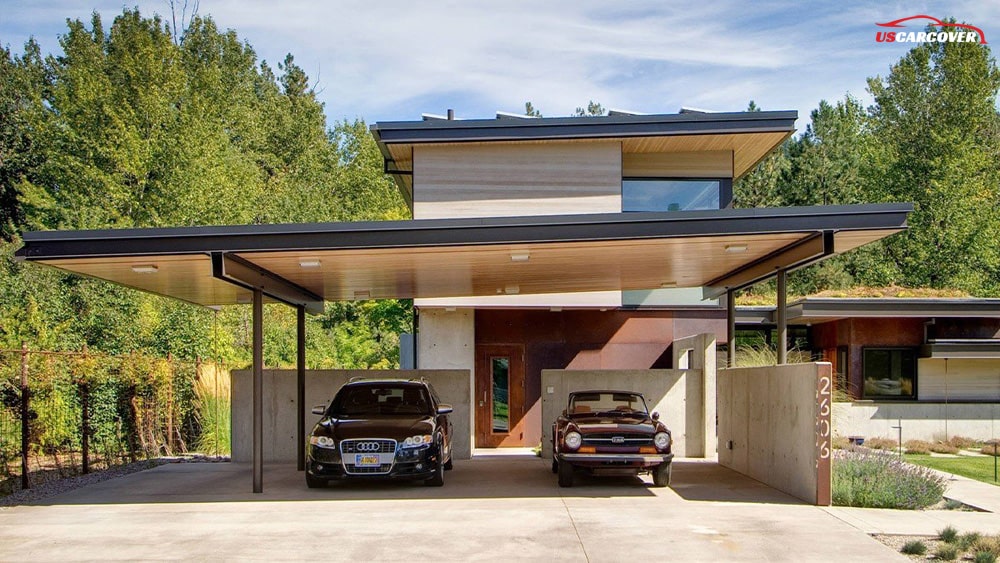
2. Hail Protection Blankets
Another popular alternative is the use of hail protection blankets or mats. These heavy-duty blankets are designed to drape over your vehicle, absorbing the impact of hailstones in much the same way as hail-resistant car covers. Made from thick, impact-resistant materials like foam or neoprene, these blankets offer excellent protection against even larger hailstones.
The advantage of hail blankets is their portability and ease of use. They can be quickly deployed in the event of a sudden storm and are often more padded than most hail-resistant car covers. On the downside, hail blankets are generally more cumbersome to store and may not offer full coverage of the vehicle, leaving windows and mirrors vulnerable. Additionally, high-quality hail blankets can be quite expensive, often costing more than a standard hail-resistant car cover.
3. Inflatable Hail Protection Systems
In recent years, inflatable hail protection systems have emerged as an innovative alternative. These systems consist of a large, inflatable barrier that surrounds the vehicle, creating a cushion of air that absorbs the impact of hailstones. When a storm is approaching, the system is deployed by inflating the barrier, which can be done manually or automatically, depending on the model.
The primary benefit of these systems is their ability to provide comprehensive protection, not just for the vehicle’s bodywork but also for vulnerable areas like windows and mirrors. However, the high cost and complexity of installation make them less accessible for the average vehicle owner. They also require ample storage space when not in use and may not be practical for those with multiple vehicles or limited parking space.
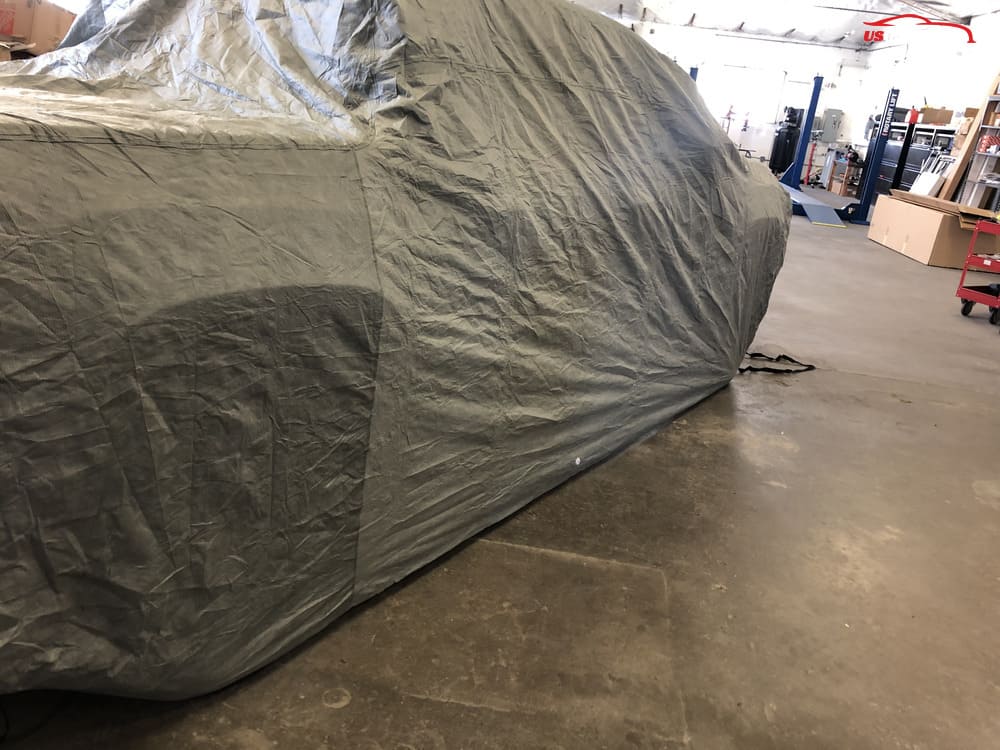
4. Hail Shields and Nets
For those looking for a more affordable, low-tech solution, hail shields or hail nets can offer some level of protection. These devices are essentially nets or mesh canopies that are set up over the vehicle, creating a buffer between the hail and the car. While they don’t provide the same level of impact absorption as padded hail covers or blankets, they can reduce the severity of damage from smaller hailstones.
The biggest advantage of hail nets is their affordability and ease of setup. However, they are not as effective in protecting against larger hailstones or high winds, making them a less reliable option in severe weather conditions.
Which Option Is Best?
Each alternative has its own set of advantages and disadvantages. Garages and carports offer the best overall protection but come with a higher price tag and logistical challenges. Hail blankets provide excellent mobility and impact resistance, but they are bulkier and more expensive than hail-resistant car covers. Meanwhile, inflatable systems and hail shields cater to specific needs but may not be practical for everyone.
Ultimately, the choice comes down to your specific situation: where you live, how often you experience hailstorms, and your budget. For many, hail-resistant car covers remain the most convenient and affordable option, especially when a garage isn’t available. However, exploring these alternatives gives you a broader set of tools for keeping your vehicle safe from hail damage.
Related Articles: Best Car Covers for Hot Weather: Ultimate UV Protection for Your Vehicle
When Should You Use a Car Cover for Hail Protection?
Deciding when to use a car cover for hail protection isn’t just about owning the right cover—it’s about knowing when it’s truly necessary. Hailstorms can strike with little warning, and depending on your location, certain times of the year may pose a higher risk for your vehicle. So, how can you determine the right moments to deploy a hail-resistant car cover, and what factors should you consider?
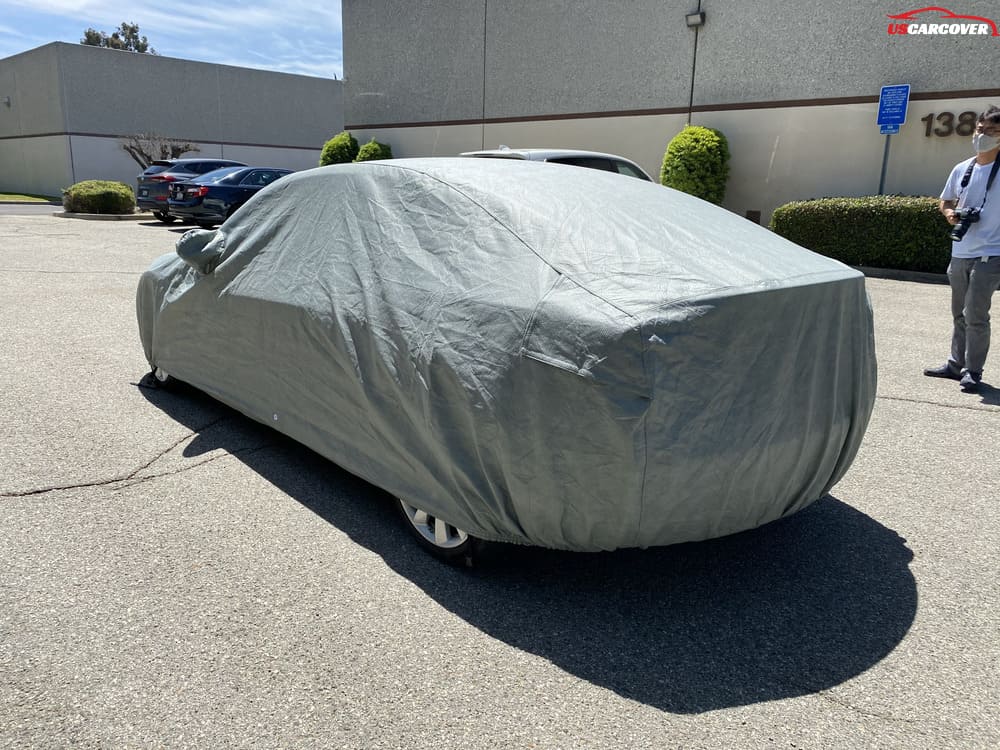
1. Weather Conditions and Forecasts
The first and most obvious indicator is the weather forecast. If you live in an area prone to hailstorms, paying attention to local weather alerts is critical. Meteorologists often provide warnings when conditions are ripe for hail, particularly during severe thunderstorms. These alerts can give you enough time to secure your vehicle and cover it with a hail-resistant car cover. Even a brief forecast of possible hail is a good reason to take precautions, as storms can intensify unexpectedly.
Hail tends to form in colder, upper atmospheric conditions, but it’s during spring and summer months when warm, moist air collides with cold fronts that hailstorms are most common. Knowing these seasonal trends in your region can help you prepare in advance, rather than waiting until the last minute. In some areas, hail may also be more frequent during late afternoons or early evenings when temperature fluctuations are most pronounced.
2. Geography: Hail-Prone Regions
Your geographical location plays a huge role in the likelihood of experiencing hail damage. Certain parts of the world, and even specific regions within countries, are far more susceptible to hailstorms than others. In the United States, for example, the “Hail Belt”—which stretches across states like Colorado, Nebraska, and Texas—regularly experiences some of the most intense hailstorms in the world. If you live in one of these high-risk areas, using a hail-resistant car cover during peak storm seasons is highly recommended.
In other regions where hail is less frequent, such as coastal or tropical areas, it may not be necessary to use a car cover regularly. However, unpredictable weather patterns have caused hailstorms to occur in unexpected places in recent years, so staying informed and keeping a cover on hand can still be wise, even outside of traditionally hail-prone regions.
3. Parking Conditions
Where your vehicle is parked can also determine whether or not you need to use a hail-resistant car cover. If you have access to covered parking, such as a garage or carport, it’s always preferable to park your car there during a storm. However, for those who park outside—whether on the street, in open driveways, or in parking lots—a hail cover is essential when the risk of a storm is imminent.
The key here is to ensure that your cover is properly fitted and secured to prevent it from being blown off by strong winds that often accompany hailstorms. Poorly secured covers can leave parts of your vehicle exposed, defeating the purpose of protection altogether. If you regularly park in open spaces, particularly in areas with little to no natural protection (like trees or nearby buildings), you should always be prepared to use a hail-resistant car cover at the first sign of a storm.
4. Length of Exposure
Another factor to consider is how long your vehicle will be exposed to the elements. For short-term parking, such as when you’re running errands or visiting a friend, it may not always be practical to deploy a hail-resistant car cover. However, if you know your vehicle will be sitting outside for extended periods—such as during work hours or overnight—using a cover becomes more critical, especially if there’s a possibility of sudden weather changes.
Longer exposure to the risk of hail increases the chance of damage, and in many cases, storms can develop while you’re away from your vehicle. Having a hail-resistant cover readily available in your car ensures you’re prepared for any scenario.
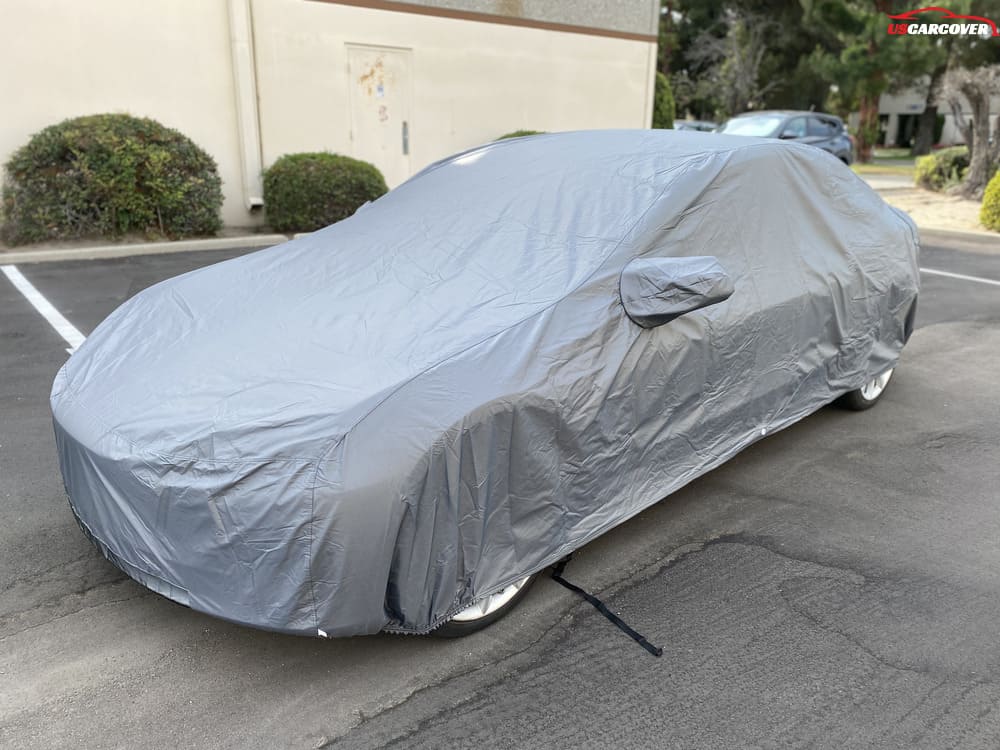
5. Frequency of Storms
Lastly, consider how frequently hailstorms occur in your region. If you live in a high-risk area with frequent storms, it’s wise to make hail protection a regular part of your routine. Keeping your car cover readily accessible and using it whenever there’s a forecast for hail can save you from costly repairs down the line. On the other hand, if you live in a region where hailstorms are rare, you may only need to use the cover during specific seasons or when the weather forecast calls for it.
Knowing when to use a car cover for hail protection depends largely on staying informed about your local weather, understanding the risks based on your location, and being proactive about deploying protection when necessary. In hail-prone regions or during high-risk seasons, keeping a hail-resistant car cover in your car is a smart, cost-effective way to protect your vehicle from unexpected storms. By paying attention to these factors, you can minimize the risk of hail damage and ensure your car remains safe, even when nature throws its worst at you.
Related Articles: How to Properly Store Your Car Cover: A Comprehensive Guide
Selecting the right hail-resistant car cover can make all the difference when it comes to protecting your vehicle from potentially costly hail damage. With so many options on the market, it’s crucial to know which features to look for and how to evaluate the quality of a cover. Not all car covers are created equal, and understanding the key factors that contribute to effective hail protection will help you make an informed decision.
1. Material Quality and Layers
The most important factor in any hail-resistant car cover is the quality of the material and the number of protective layers. Traditional car covers typically use lightweight fabrics like polyester or vinyl, which provide protection against dust, rain, and UV rays but fall short in hail protection. For true hail resistance, you’ll want a cover made from thicker, impact-absorbing materials.
Look for covers that incorporate multi-layer designs, with at least one layer dedicated to absorbing the impact of hailstones. High-quality hail-resistant covers often use a combination of heavy-duty fabric, foam padding, and in some cases, air pockets or gel layers that disperse the force of impact. The more layers a cover has, the better it will be at absorbing the energy from hail and preventing damage to your vehicle’s exterior.
Additionally, ensure that the outer layer is durable enough to withstand not just hail, but also other harsh weather conditions like strong winds and rain. A good hail-resistant car cover should provide year-round protection, not just during hailstorms.

2. Size and Fit
Another key aspect to consider is the size and fit of the cover. An ill-fitting car cover can lead to poor protection, especially in high winds, where the cover might shift or be blown off, exposing parts of the vehicle to damage. It’s essential to choose a cover specifically designed to fit your vehicle’s make and model. Many manufacturers offer custom-fit covers tailored to individual car types, ensuring complete coverage from bumper to bumper.
Even if you opt for a more universal design, make sure the cover includes features like elastic hems, straps, or tie-downs to secure it in place. These features help keep the cover snugly fitted, preventing it from moving around in windy conditions or during a storm, which is especially important when dealing with hailstorms.
3. Ease of Use and Storage
A hail-resistant car cover is only effective if it’s easy to deploy when needed. Look for covers that are lightweight enough to handle easily but still provide the thickness and protection required for hail damage. Some covers can be bulky, particularly those with multiple layers, but it’s important to strike a balance between protection and usability.
If you live in an area where hailstorms can occur with little notice, you’ll want a cover that can be quickly installed and removed. Some models come with convenient storage bags or compact folding designs that make them easier to store in your trunk when not in use. The quicker and more practical it is to use, the more likely you are to protect your vehicle effectively when a storm hits.
4. Durability and Weather Resistance
The best hail-resistant car covers not only protect against hail, but also offer resistance to a range of other weather elements. Look for covers that are waterproof, UV-resistant, and capable of withstanding extreme temperatures. This ensures that the cover will be versatile enough to protect your car in all weather conditions, from intense sun to heavy rain and snow.
The durability of the cover’s materials is another critical factor. High-quality covers should last for several years, even with regular use in harsh conditions. Be wary of cheaper options that may degrade quickly after exposure to UV rays or frequent rainstorms, as these will not offer adequate long-term protection against hail or other elements.
5. Brand Reputation and Reviews
When it comes to hail protection, it pays to invest in a reputable brand. Established manufacturers with a history of producing high-quality car covers are more likely to deliver reliable performance. Before making a purchase, take the time to read customer reviews and testimonials. These can provide valuable insights into the real-world effectiveness of a hail-resistant car cover, as well as the longevity of the product and the company’s customer support.
It’s also helpful to look for brands that offer warranties or satisfaction guarantees, which can give you peace of mind in case the cover doesn’t perform as expected. A strong warranty often indicates that the manufacturer stands behind the quality and durability of their product.
6. Budget Considerations
While it’s tempting to opt for a cheaper option, remember that protecting your vehicle from hail damage can save you thousands in repair costs. Investing in a higher-quality, hail-resistant car cover may require a larger upfront investment, but it can pay off in the long run by preventing costly damage.
That said, there are hail-resistant covers available at a variety of price points. Determine your budget, but keep in mind that quality and effectiveness should be the top priorities. A low-cost cover might seem appealing, but if it doesn’t provide adequate protection, you could end up facing hefty repair bills.
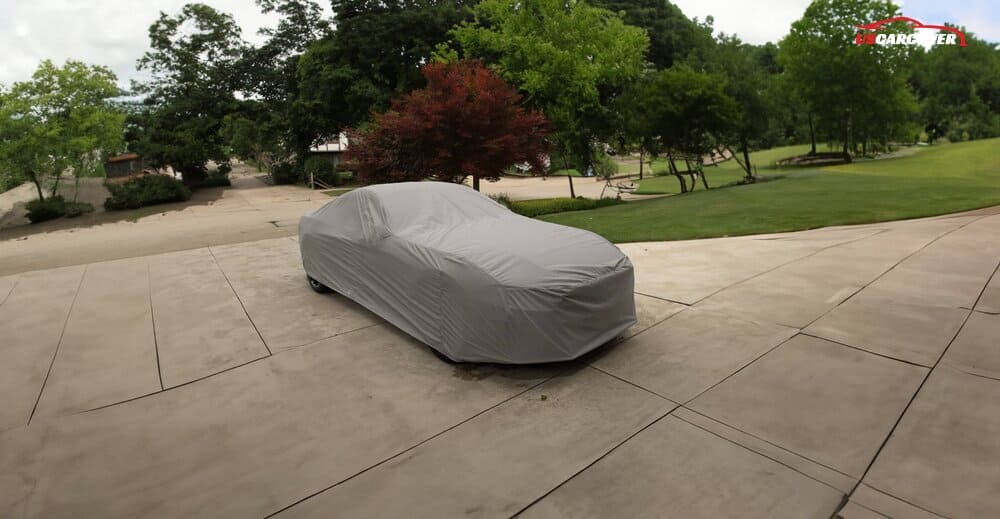
Product Recommendations
If you’re looking for the best hail-resistant car covers on the market, here are a few brands and products that have consistently received positive feedback for their performance and durability:
- Covercraft: Known for their custom-fit covers that provide multi-layer protection, including models specifically designed for hail protection.
- Hail Protector: Offers an innovative, inflatable car cover system designed to shield vehicles from even large hailstones.
- OxGord Executive Storm-Proof Cover: A multi-layer cover that’s budget-friendly and provides solid protection for those in moderate hail-prone regions.
Choosing the right hail-resistant car cover requires careful consideration of several key factors, including material quality, fit, durability, and ease of use. By investing in a high-quality cover that fits your vehicle properly and offers multi-layered protection, you can significantly reduce the risk of hail damage and save yourself from costly repairs. Whether you live in a hail-prone region or just want peace of mind during stormy weather, a well-chosen car cover is an essential tool in protecting your vehicle from the elements.
Once you’ve invested in a hail-resistant car cover, proper maintenance is essential to ensure it continues to protect your vehicle effectively. Like any protective gear, car covers experience wear and tear, especially when they are exposed to harsh weather conditions. By following a few simple care tips, you can extend the lifespan of your cover and maintain its hail protection capabilities.
1. Regular Cleaning
One of the easiest ways to maintain your car cover is through regular cleaning. Dirt, debris, and even bird droppings can accumulate on the surface, which can degrade the cover’s materials over time. Not only does this dirt look unsightly, but it can also reduce the cover’s ability to repel water, resist UV rays, and absorb hail impact. Additionally, a dirty cover can transfer grime to your vehicle’s paint, defeating the purpose of using a cover in the first place.
Most hail-resistant covers can be cleaned using mild soap, water, and a soft cloth or sponge. Avoid harsh detergents or abrasive brushes, as they can damage the protective layers of the cover. Some covers are even machine washable—always check the manufacturer’s guidelines before attempting to wash it.
Cleaning your cover every few months, or more frequently if exposed to constant outdoor use, will help preserve its protective properties.
2. Proper Storage
When not in use, how you store your car cover is critical to its longevity. Make sure the cover is completely dry before storing it to prevent the growth of mold and mildew. Mold can not only weaken the material but also cause unpleasant odors that make the cover difficult to handle in the future.
For most covers, it’s best to fold them neatly and store them in a cool, dry location. Many hail-resistant covers come with a storage bag or case, which helps protect the cover from dust and moisture when it’s not in use. Avoid storing the cover in a cramped, damp environment, as prolonged exposure to moisture can degrade the materials over time.
3. Inspect for Wear and Tear
Just as you would inspect your vehicle for dents or damage after a hailstorm, it’s important to regularly inspect your car cover for signs of wear and tear. Over time, seams may loosen, and the outer layers may begin to thin out due to repeated exposure to UV rays, wind, rain, and hail.
Look for any tears, holes, or thinning areas in the fabric, particularly in the areas that receive the most direct sunlight or that tend to be the most stretched when covering your vehicle. Minor damage can sometimes be repaired using special fabric patches or sealants, but if the integrity of the cover is compromised—especially in areas critical for hail protection—it may be time to replace it.
4. Securing the Cover During Use
Another important aspect of maintaining your hail-resistant car cover is making sure it’s properly secured when in use. A poorly fitted or loosely fastened cover can flap in the wind during storms, leading to wear and friction on both the cover and your vehicle. Over time, this can cause the material to fray, or worse, fail to provide the protection you need when the next hailstorm hits.
Many car covers come with straps, buckles, or tie-downs designed to keep the cover in place. Always make sure these are tightly secured when the cover is on your vehicle. For areas prone to strong winds, some users even add additional fasteners or weights to ensure the cover stays put.
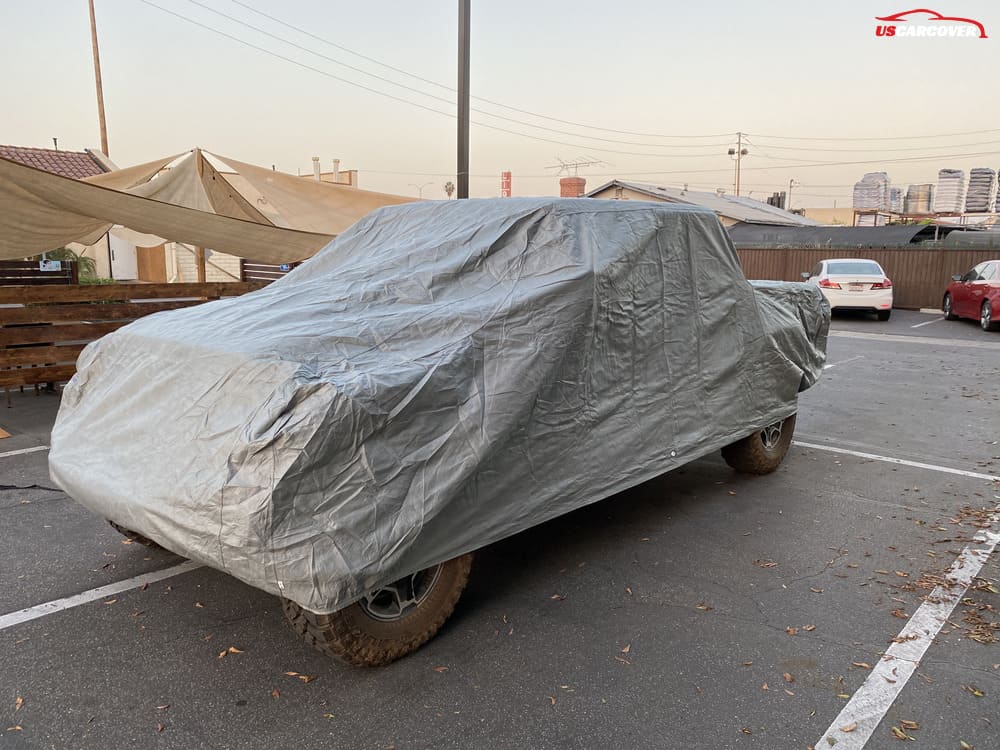
5. Avoid Prolonged Sun Exposure
Although hail-resistant covers are designed to withstand the elements, prolonged exposure to direct sunlight can cause UV degradation, particularly in the outer layers. Over time, UV rays can weaken the fabric, making it less effective at absorbing impact from hailstones and other elements.
If possible, store your vehicle in a shaded area or under a carport when using a cover for long periods. If this isn’t an option, be sure to choose a cover with strong UV resistance. Some covers are specially treated to withstand prolonged sun exposure, but even these will benefit from reduced direct sunlight whenever possible.
6. Follow Manufacturer’s Instructions
Every hail-resistant car cover is different, and manufacturers typically provide specific instructions on how to care for their product. Be sure to follow these guidelines closely, particularly regarding cleaning, storage, and usage. Failure to adhere to the manufacturer’s care instructions could not only reduce the cover’s effectiveness but also void any warranty that may come with the product.
Some manufacturers recommend using special treatments or sprays that can enhance the water-repellency or UV-resistance of the cover. If this is the case, following these recommendations will help you get the most out of your car cover over time.
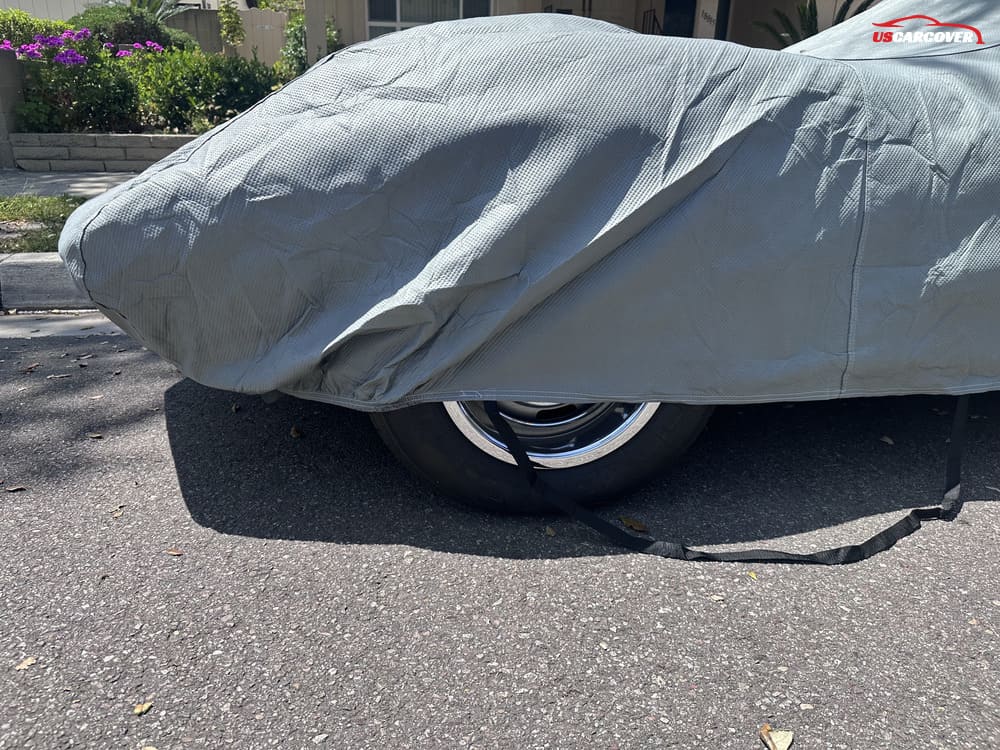
Conclusion: Maintain to Maximize Protection
Proper maintenance is key to ensuring that your hail-resistant car cover continues to perform at its best, providing reliable protection for your vehicle. By keeping your cover clean, storing it correctly, and regularly checking for damage, you can extend its lifespan and maintain its hail protection capabilities. A well-maintained car cover not only saves you from potential vehicle damage but also maximizes the return on your investment, giving you peace of mind for years to come.
